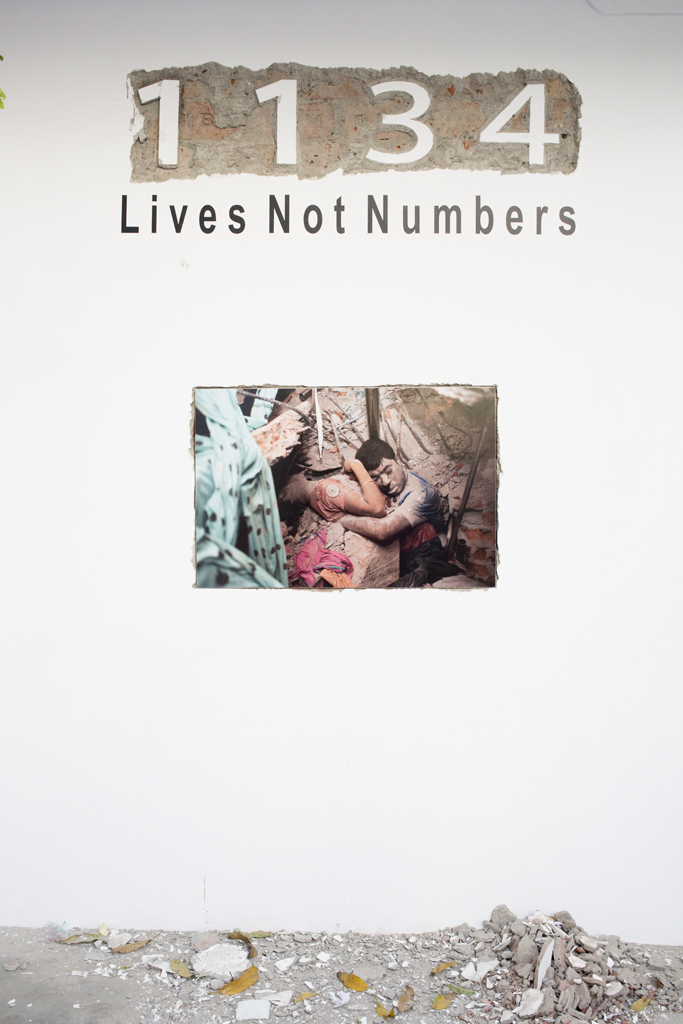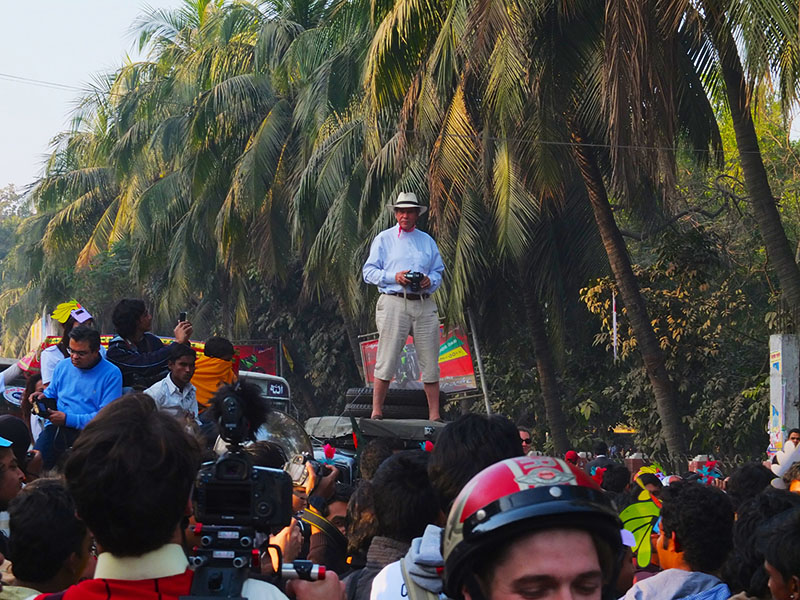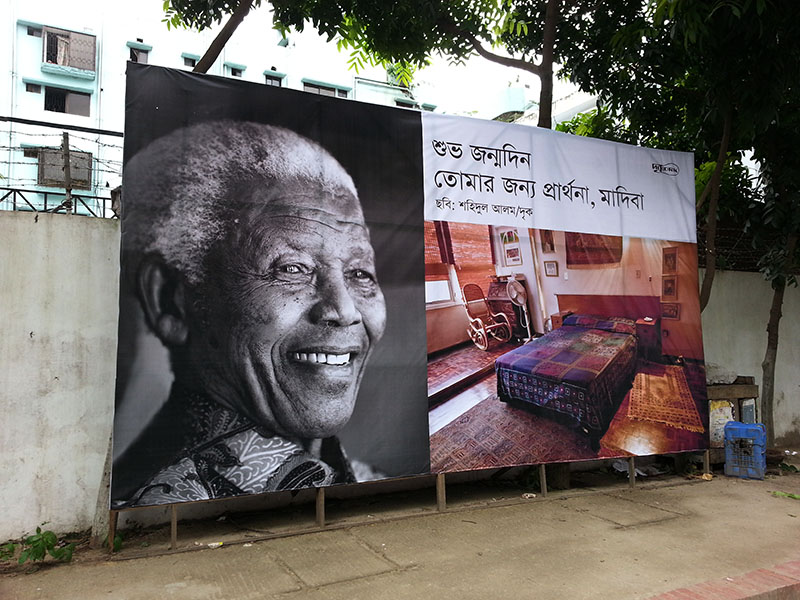A group exhibition dedicated to the lost garment workers of Bangladesh.

Musings by Shahidul Alam

Win a festival catalogue!
Deadline: 28 February 2014
Chobi Mela, the international festival of photography since its inception in 2000 has aimed at exploring the semiotics of present day photographic practice in a broad international context, to bring about an understanding of the medium both within the industry and amongst the public at large. The past festivals, thematically addressed?Differences, Exclusion, Resistance, Boundaries,?Freedom, Dreams and Fragility?provided an opportunity to fine art photographers, conceptual artists and photo journalists, to explore possibilities, in its myriad forms.
Chobi Mela invites you to propose a theme for its upcoming eighth edition. Proposals will then be debated online and followed by a poll. The most voted theme will be chosen for the next festival and will win an exciting copy of the Chobi Mela VIII catalogue.
Deadline: 28 February 2014
Drop your theme and be a part of world?s most inclusive festival!
http://chobimela.org/
Best regards,
Chobi Mela Secretariat
Dhaka, Bangladesh
E-mail:?chobimela@drik.net
 The view to the tony residential neighborhood, Gulshan, photographed from the Korail slum. Photo: Mohammad Tauheed. See also Tauheed?s gallery of photos of Dhaka.You could, on first glance, see Dhaka as a fast and loose place, the kind of city that draws people in, churns them around and spits them out after a few tough years. Many in Dhaka face circumstances similar to those in other South Asian cities: poverty, limited education, exploitation. Dhaka itself sits at or near the bottom of rankings of the world?s cities ? not a happy picture. Perhaps you read about Dhaka recently because of the political unrest roiling Bangladesh now (the latest national strike was called on November 26, and the capital city often bears the brunt of any political unrest). Or perhaps it was because of the collapse of a garment factory on the outskirts of the city in April 2013, which killed more than 1,000 people, a disaster that shone light on political and civic failings in the city.
The view to the tony residential neighborhood, Gulshan, photographed from the Korail slum. Photo: Mohammad Tauheed. See also Tauheed?s gallery of photos of Dhaka.You could, on first glance, see Dhaka as a fast and loose place, the kind of city that draws people in, churns them around and spits them out after a few tough years. Many in Dhaka face circumstances similar to those in other South Asian cities: poverty, limited education, exploitation. Dhaka itself sits at or near the bottom of rankings of the world?s cities ? not a happy picture. Perhaps you read about Dhaka recently because of the political unrest roiling Bangladesh now (the latest national strike was called on November 26, and the capital city often bears the brunt of any political unrest). Or perhaps it was because of the collapse of a garment factory on the outskirts of the city in April 2013, which killed more than 1,000 people, a disaster that shone light on political and civic failings in the city.
Chobi Mela, a biennale photography festival held in Dhaka, Bangladesh just completed its 7th edition in January 2013. Chobi Mela (literally, photo fair), started in 1999, is Asia?s largest photo festival. This year the theme was Fragility. Continue reading “Reflections on Chobi Mela VII”
Photo: Prabir Das
Taking a stroll around Madhur Canteen, named after Madhu Sudan Dey, a visitor would come across various spots ? where students of Dhaka University sit in rows, chatting and possibly planning their future. It is a place where the streets widen to make room for creative minds and the walls are covered with political graffiti and posters. Chairman of Workers Party of Bangladesh, Rashed Khan Menon considered it as a parallel school of progressive thought, politics and rational debates, and till date he believes, ?its yard is filled with the leaders of?tomorrow.? Continue reading “THE LEGACY OF MADHU?S CANTEEN”

I never met Nelson Mandela in person, but once listened to him live.
I watched him speak — in his characteristically thoughtful and cheerful manner ? for a few minutes, and was mesmerized. Continue reading “Waiting for My Own Mandela?”

Many powerful photographs have been made in the aftermath of the devastating collapse of a garment factory on the outskirts of Dhaka, Bangladesh. But one photo, by Bangladeshi photographer Taslima Akhter, has emerged as the most heart wrenching, capturing an entire country?s grief in a single image.
Shahidul Alam, Bangladeshi photographer, writer and founder of Pathshala, the South Asian Institute of Photography, said of the photo: ?This image, while deeply disturbing, is also hauntingly beautiful. An embrace in death, its tenderness rises above the rubble to touch us where we are most vulnerable. By making it personal, it refuses to let go. This is a photograph that will torment us in our dreams. Quietly it tells us. Never again.? Continue reading “A Final Embrace: The Most Haunting Photograph from Bangladesh”

I came across this man yesterday. He was sitting on the footpath on VIP road (near the Tourism Department) carefully adjusting the rocks he had placed on his legs. There were smaller pieces he used to make fine adjustments to weights. He was neither begging, nor seeking attention, but merely trying to treat himself.
He had apparently been hit by a bus, had gone to Mohakhali hospital, but received no treatment.
Al Amin injured in road accident went 2 Mohakhali hosp bt received no trtmnt. Puts rocks on legs 2 ease pain. #Dhaka twitter.com/shahidul/statu?
— Shahidul Alam (@shahidul) April 8, 2013